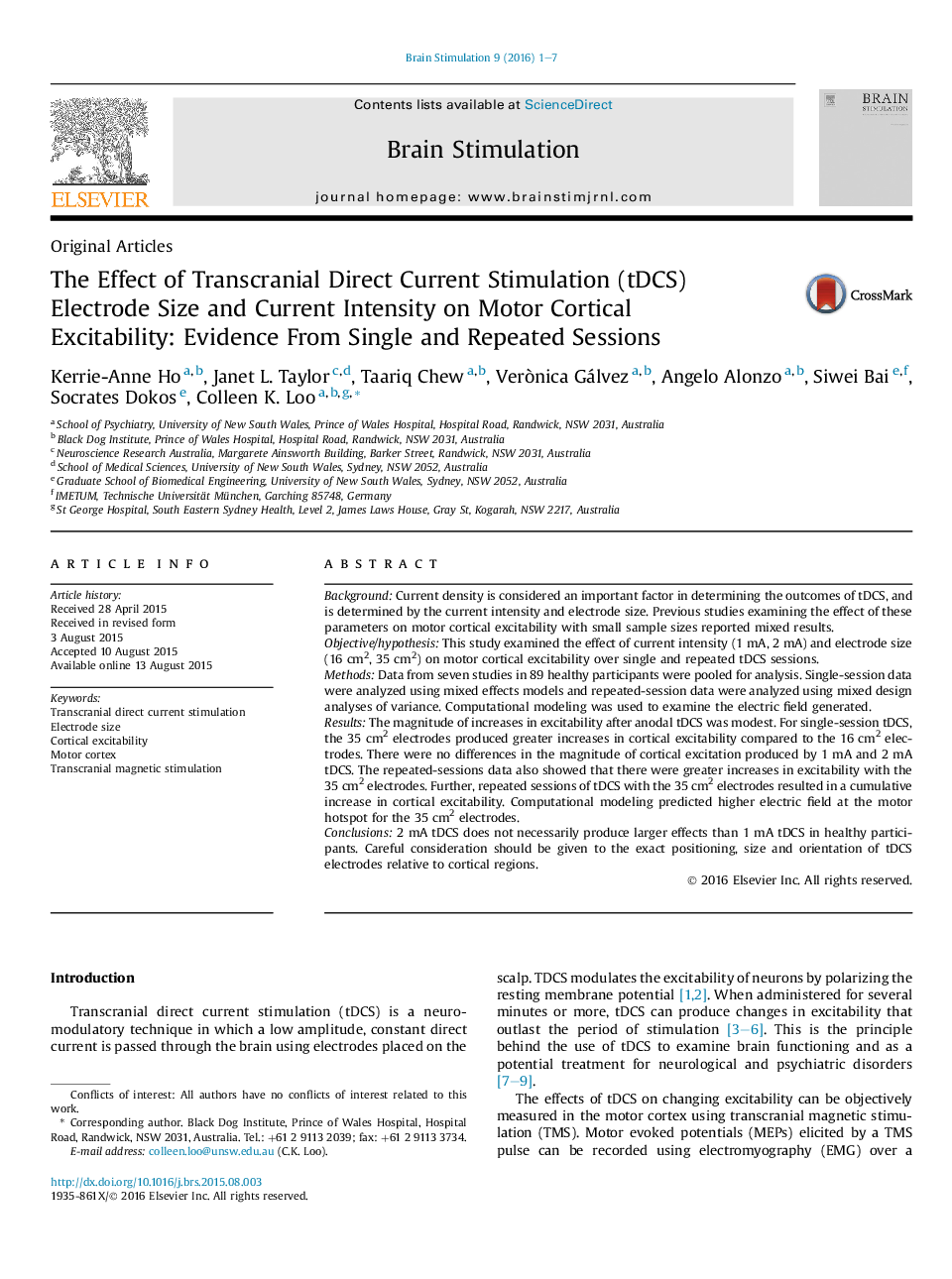| Article ID | Journal | Published Year | Pages | File Type |
|---|---|---|---|---|
| 6005111 | Brain Stimulation | 2016 | 7 Pages |
â¢35 cm2 electrodes resulted in greater cortical excitation than 16 cm2 electrodes.â¢There is a cumulative increase with 35 cm2 electrodes over repeated sessions.â¢There was no difference between 1 mA and 2 mA stimulation.â¢There was greater electric field over the motor hotspot with 35 cm2 electrodes.
BackgroundCurrent density is considered an important factor in determining the outcomes of tDCS, and is determined by the current intensity and electrode size. Previous studies examining the effect of these parameters on motor cortical excitability with small sample sizes reported mixed results.Objective/hypothesisThis study examined the effect of current intensity (1Â mA, 2Â mA) and electrode size (16Â cm2, 35Â cm2) on motor cortical excitability over single and repeated tDCS sessions.MethodsData from seven studies in 89 healthy participants were pooled for analysis. Single-session data were analyzed using mixed effects models and repeated-session data were analyzed using mixed design analyses of variance. Computational modeling was used to examine the electric field generated.ResultsThe magnitude of increases in excitability after anodal tDCS was modest. For single-session tDCS, the 35Â cm2 electrodes produced greater increases in cortical excitability compared to the 16Â cm2 electrodes. There were no differences in the magnitude of cortical excitation produced by 1Â mA and 2Â mA tDCS. The repeated-sessions data also showed that there were greater increases in excitability with the 35Â cm2 electrodes. Further, repeated sessions of tDCS with the 35Â cm2 electrodes resulted in a cumulative increase in cortical excitability. Computational modeling predicted higher electric field at the motor hotspot for the 35Â cm2 electrodes.Conclusions2Â mA tDCS does not necessarily produce larger effects than 1Â mA tDCS in healthy participants. Careful consideration should be given to the exact positioning, size and orientation of tDCS electrodes relative to cortical regions.
